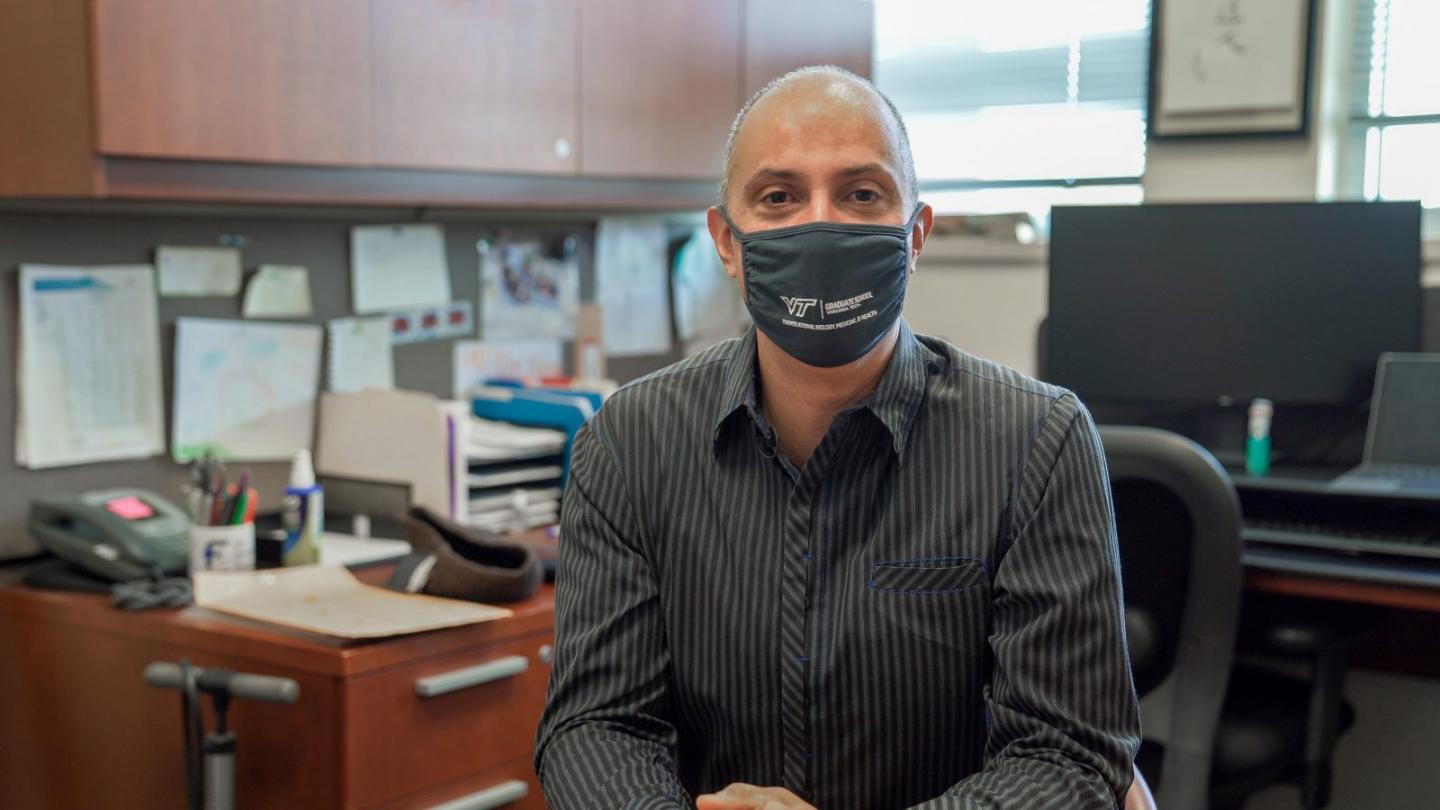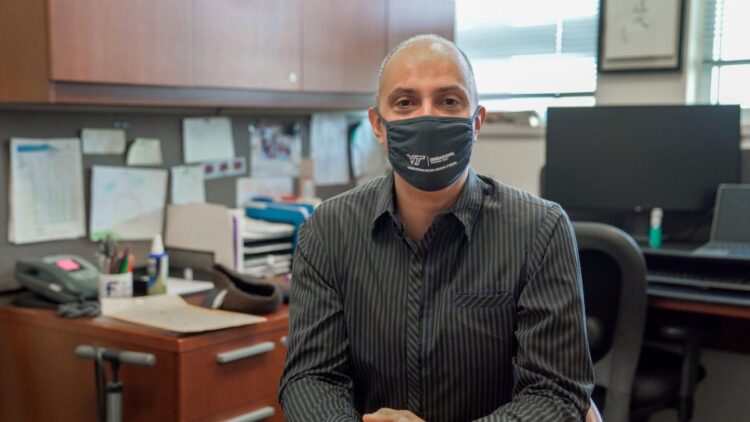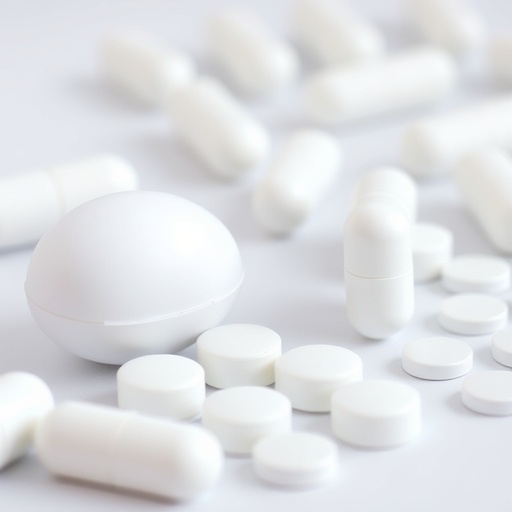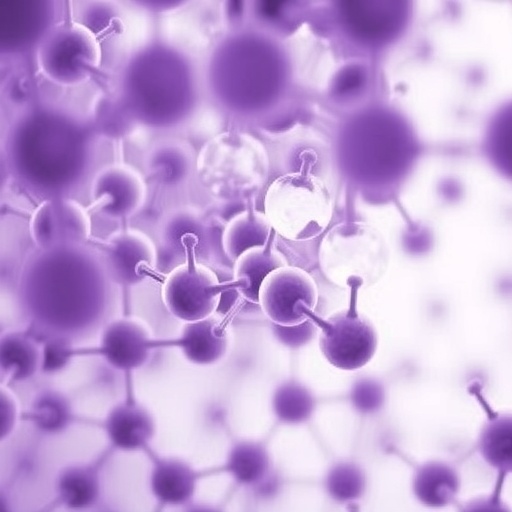Fralin Biomedical Research Institute at VTC researchers show subtle changes regulate heartbeats

Credit: Clayton Metz/Virginia Tech
Blood may seem like a simple fluid, but its chemistry is complex. When too much potassium, for instance, accumulates in the bloodstream, patients may experience deadly irregular heart rhythms.
Cardiovascular scientists at Virginia Tech’s Fralin Biomedical Research Institute at VTC are studying why.
In a new study, published in Pflügers Archiv European Journal of Physiology, the research team led by Steven Poelzing, associate professor at the institute, describes how subtle changes in potassium, calcium, and sodium levels regulate heartbeats.
Poelzing says that the results could help researchers and physicians understand the nuances of cardiac arrythmias, as well as a group of genetic disorders that impact sodium channel function, such as Brugada syndrome.
The scientists elevated blood potassium in guinea pigs, creating a condition called hyperkalemia, which causes some of the heart’s key electrical conduits, sodium channels, to shut down. Next, they increased calcium levels and observed the heart muscle cells pressing closer together. This miniscule motion – spanning mere nanometers – helps preserve electrical conduction in the heart.
“We know the heart is extremely sensitive to changes in blood electrolyte levels, but until recently we didn’t have a great picture of how the heart’s molecular landscape is remodeled, and how these muscle cells adapt,” said Poelzing, who is also an associate professor in the Virginia Tech College of Engineering’s department of biomedical engineering and mechanics.
Heart muscle cells primarily pass electrical signals via a network of protein bridges called gap junctions and sodium channels. These pathways let nutrients and positively charged minerals flow between cells. When there are too many positively charged potassium ions in the blood, however, the cells get overstimulated and temporarily block signaling channels.
“This can be dangerous when sodium channels get stuck in a half-closed state. The cell isn’t dying, but it’s not as electrically active as it once was. This can cause dangerous heart arrythmias and sudden cardiac death,” Poelzing said.
When the heart’s core electrical pathways falter, heart muscle cells press closer together, allowing them to sense subtle electric fields generated by neighboring cells. This secondary form of cell-to-cell signaling is known as ephaptic coupling.
“Ephaptic coupling appears to address the effects of a functional loss of sodium channels, in this case caused by high potassium, and helps keep the current flowing properly across the heart muscle,” Poelzing said.
Over the course of the eight-year study, Poelzing’s team tested different concentrations of sodium and calcium to treat the electrical defects associated with high potassium to see how the heart would respond. They discovered that increasing sodium and calcium levels together greatly reduced the distances between cells, providing a substantial improvement in cardiac conduction.
In the clinic, human patients with hyperkalemia who develop abnormal heart rhythms are administered intravenous calcium gluconate. Poelzing’s findings help explain why elevating calcium levels under these certain clinical conditions is beneficial.
“What surprised me is that such small changes in electrolyte values have such dramatic effects,” said Ryan King, the study’s first author and a postdoctoral research associate in the lab of Scott Johnstone, an assistant professor at the Fralin Biomedical Research Institute. “The ranges of sodium, calcium, and potassium we used in this study are not exaggerated, extreme ionic conditions that you’d never find in a clinical setting. They’re all within ranges that could show up in metabolic blood panels.”
###
King worked in Poelzing’s lab for more than four years while completing his Translational Biology, Medicine, and Health (TBMH) doctoral degree at Virginia Tech.
Alexandra Hanlon, director of the Virginia Tech Center for Biostatistics and Health Data Science (CBHDS) and professor of practice in statistics, and Ian Crandell, CBHDS research scientist, oversaw the study’s statistical strategy.
The study’s other contributing authors included Michael Entz II, an engineer at Cook Medical who was a graduate student mentored by Poelzing during the study; Grace Blair, a TBMH graduate student; and Gregory Hoeker, a research assistant professor in Poelzing’s lab.
The research was funded by National Institutes of Health grants awarded to King, and Poelzing. The work done by CBHDS for this research was supported by the NIH’s National Center for Advancing Translational Sciences Clinical and Translational Science Award (CTSA) to the integrated Translational Health Research Institute of Virginia (iTHRIV). iTHRIV represents a partnership between Virginia Tech, the University of Virginia, Carilion Clinic, and Inova Health.
Media Contact
Whitney Slightham
[email protected]
Original Source
https:/
Related Journal Article
http://dx.





